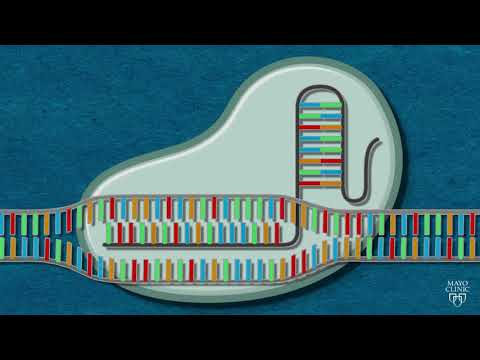Researchers Publish 'Revolutionary' Gene Editing Findings
2024-07-01

Preview
来源: Healthcare Digital
The new RNA technique has only been tested in bacteria, but if it works in human cells, it could be "revolutionary”, say researchers.
Scientific journal Nature publishes papers on RNA gene-editing technique that builds on CRISPR breakthrough that won 2020 Nobel Prize in Chemistry
A new gene-editing tool promises to be even more powerful than an existing technique that won a Nobel Prize in Chemistry, a recently published pair of papers suggest.
The new ‘bridge-editing’ technique employs a combination of Ribonucleic acid (RNA) – a molecule present in the majority of living organisms and viruses – and a type of enzyme, called a recombinase protein.
Together, these are capable of specifying not only a target site on the genome to be cut, but also the DNA to be edited. It means that this system can be used to insert, remove or reverse DNA sequences of virtually any length, researchers say.
This effectively makes the RNA programmable, and allows it to bridge a genetic donor and a target, meaning it could herald a safer and more flexible approach to large-scale chromosome changes.
The findings have been published in two papers in Nature, one of the world’s leading multidisciplinary scientific publications.
The RNA breakthrough builds on existing, similar gene technology, known as CRISPR (Clustered Regularly Interspaced Short Palindromic Repeats). CRISPR is used by research scientists to selectively modify the DNA of living organisms, and was adapted for use in the laboratory from naturally occurring genome editing systems found in bacteria.

Preview
来源: Healthcare Digital
CRISPR uses enzymes to act as ‘genetic scissors’
CRISPR uses enzymes to act as ‘genetic scissors’, to cut DNA at chosen sites on the genome, after which a cell’s repair mechanisms kicks in, to facilitate DNA repair.
The CRISPR breakthrough was discovered by Jennifer Doudna, Professor of Biochemistry, Biophysics & Structural Biology at the University of California, Berkeley, and Emmanuelle Charpentier, a French professor and researcher in microbiology, genetics, and biochemistry. The pair won the 2020 Nobel Prize in Chemistry for their work.
The new RNA technique has only been tested in bacteria, but if it works in human cells, it “could be revolutionary”, Patrick Hsu of the Arc Institute in Palo Alto, California – a co-author of the papers – said in a press briefing.
He added that the RNA technique “has the ability to make genetic changes that are thousands of bases long”. This, he added, “is much larger than is practical with the CRISPR genome-editing system, without breaking DNA”.
The multiple steps of DNA repair that are triggered by CRISPR are unnecessary with the bridge repair system, Hsu pointed out, adding that this makes it a more efficient process.
A new gene-editing tool promises to be even more powerful than an existing technique that won a Nobel Prize in Chemistry, a recently published pair of papers suggest.
The new ‘bridge-editing’ technique employs a combination of Ribonucleic acid (RNA) – a molecule present in the majority of living organisms and viruses – and a type of enzyme, called a recombinase protein.
Together, these are capable of specifying not only a target site on the genome to be cut, but also the DNA to be edited. It means that this system can be used to insert, remove or reverse DNA sequences of virtually any length, researchers say.
This effectively makes the RNA programmable, and allows it to bridge a genetic donor and a target, meaning it could herald a safer and more flexible approach to large-scale chromosome changes.
The findings have been published in two papers in Nature, one of the world’s leading multidisciplinary scientific publications.
The RNA breakthrough builds on existing, similar gene technology, known as CRISPR (Clustered Regularly Interspaced Short Palindromic Repeats). CRISPR is used by research scientists to selectively modify the DNA of living organisms, and was adapted for use in the laboratory from naturally occurring genome editing systems found in bacteria.

Preview
来源: Healthcare Digital
CRISPR uses enzymes to act as ‘genetic scissors’
CRISPR uses enzymes to act as ‘genetic scissors’, to cut DNA at chosen sites on the genome, after which a cell’s repair mechanisms kicks in, to facilitate DNA repair.
The CRISPR breakthrough was discovered by Jennifer Doudna, Professor of Biochemistry, Biophysics & Structural Biology at the University of California, Berkeley, and Emmanuelle Charpentier, a French professor and researcher in microbiology, genetics, and biochemistry. The pair won the 2020 Nobel Prize in Chemistry for their work.
The new RNA technique has only been tested in bacteria, but if it works in human cells, it “could be revolutionary”, Patrick Hsu of the Arc Institute in Palo Alto, California – a co-author of the papers – said in a press briefing.
He added that the RNA technique “has the ability to make genetic changes that are thousands of bases long”. This, he added, “is much larger than is practical with the CRISPR genome-editing system, without breaking DNA”.
The multiple steps of DNA repair that are triggered by CRISPR are unnecessary with the bridge repair system, Hsu pointed out, adding that this makes it a more efficient process.
更多内容,请访问原始网站
文中所述内容并不反映新药情报库及其所属公司任何意见及观点,如有版权侵扰或错误之处,请及时联系我们,我们会在24小时内配合处理。
适应症
-靶点
-药物
-来和芽仔聊天吧
立即开始免费试用!
智慧芽新药情报库是智慧芽专为生命科学人士构建的基于AI的创新药情报平台,助您全方位提升您的研发与决策效率。
立即开始数据试用!
智慧芽新药库数据也通过智慧芽数据服务平台,以API或者数据包形式对外开放,助您更加充分利用智慧芽新药情报信息。



